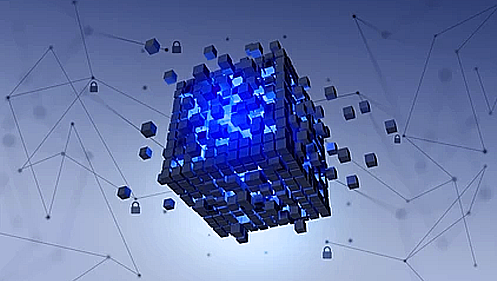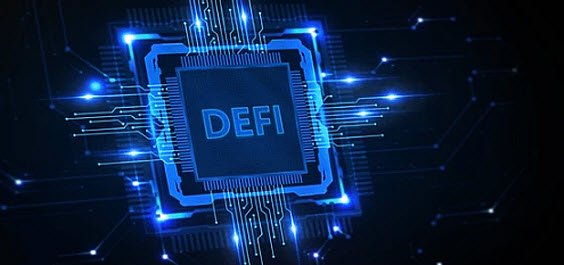Accredited InvestorsAltcoinAnatoli UnitskyAnti-Money Laundering (AML) In CryptoAPIArbitrageArtCoin TokenArticle DirectoryASICAuction Terminology GlossaryBasics of Stock Market InvestingBear MarketBest Crypto Payment Provider In the WorldBitcoinBlockchainBlockchain ConfirmationBlockchain Consensus MechanismBlockchain ForkBlockchain GlossaryBored Ape Yacht ClubBuild a Business That OutperformsBull MarketBuying SkyWay SharesByzantine Fault Tolerance (BFT) ExplainedCasascius CoinCentral Bank Digital Currency (CBDC)Centralized Crypto ExchangeCoinCoinsetCold WalletCollateralCommodity Futures Trading Commission (CFTC)Cross-Chain TechnologyCRUCrypto ExchangeCrypto GlossaryCrypto JokesCrypto Terms to KnowCrypto TickerCryptocurrencyCryptographyCryptojackingCryptounit BlockchainCryptounit GlossaryCryptounit ProgramdApp (Decentralized Application)Dead CoinDecentralized Exchange (DEX)Decentralized Finance (DeFi)Difference Between Bitcoin and EthereumDifferent Ways of Investing MoneyDigital CurrencyDistributed LedgerDo Your Own Research (DYOR)Dollar Cost Averaging (DCA)Dow Jones Industrial Average (DJIA)EncryptionERC-20ERC-721EthereumEvoScentFear Of Missing Out (FOMO)Fear, Uncertainty and Doubt (FUD)Fiat MoneyFNT Fintech CompanyGenesis BlockGlobal Unit PayGlossary of Banking TermsGlossary of Business TermsGlossary of Financial TermsHalvingHODLHot WalletHow Do I Start InvestingHow Rich is Satoshi Nakamoto?How to Create a BlockchainHow to Find Private InvestorsHow to Get Into FintechHow to Program Smart ContractsI Am Thrilled to Be a Part of This Global ProjectInitial Coin Offering (ICO)Initial Public Offering (IPO)Initial Token Offering (ITO)Innovation Basalt TechnologyInnovative Transportation TechnologiesInternational Bank Account Number (IBAN)Investing in Gold Mining StocksInvesting in Gold MiningJagerJoy of Missing Out (JOMO)Know Your Customer (KYC)LedgerLiquidity in CryptocurrencyMaker and Taker Fees in Crypto TradingMarket Capitalization (Market Cap)Meme CoinMetal Credit CardMetaMaskMillenials Now Have Access to Generational WealthMy Best Investment EverNew Digital EvolutionNFT GlossaryOff-Chain TransactionsOn-Chain TransactionsOpen Edition NFTPeer-to-Peer (P2P)Personal Loan GlossaryProbably the Best STO on the MarketProof of Stake (PoS)Real Estate Glossary of TermsReal Estate Investing GlossaryRebase TokenSecurities and Exchange Commission (SEC)Security Token ExchangesSecurity Token Offering (STO)Soulbound Decentralized Identities for Security TokensSoulbound ID Launch by Stobox Proves a SuccessSoulbound TokensStoboxStock Market GlossaryTestimonialsTether Platform and Token (USDT)UnitEx ExchangeUnitsky String TechnologiesUNTBUSDUValidatorWe Started Investing When We Were 25What are Blue Chip NFT?What are Blue Chip Stocks?What are Crypto Assets?What are Crypto Smart Contracts?What are CryptoPunks NFT?What are Digital Assets?What are Digital Collectibles?What are Gas Fees?What are Gas Wars?What are Hashmasks?What are Non Fungible Tokens?What are Non-Sufficient Funds (NSF)?What are Soulbound Tokens (SBT)?What are Stablecoins in Crypto?What are Transactions Per Second (TPS)?What are Utility NFTs?What are Utility Tokens?What Does Burning Crypto Mean?What Does Diamond Hands Mean?What Does Paper Hands Mean?What Does To The Moon Mean?What Does WAGMI Mean?What Happened to Satoshi Nakamoto?What is a 51% Attack?What is a Baby Boomer?What is a Backlink?What is a Banner?What is a Barcode?What is a Bid-Ask Spread in Crypto?What is a Block in Blockchain?What is a Block Reward?What is a Blockchain Address?What is a Blockchain Node?What is a Blockchain Oracle?What is a Blog?What is a Bond?What is a Bot?What is a Broker?What is a Business Accelerator?What is a Cash Cow?What is a Commercial Bank?What is a Commodity?What is a Con?What is a Credit?What is a Credit Limit?What is a Credit Rating?What is a Crypto Airdrop?What is a Crypto Bridge?What is a Crypto Scam?What is a Crypto Token?What is a Crypto Wallet?What is a Crypto Whale?What is a Crypto Winter?What is a Cryptocurrency Public Ledger?What is a Cryptocurrency Roadmap?What is a DAO?What is a Dark Pool?What is a Day Trader?What is a Dead Cat Bounce?What is a Default?What is a Derivative?What is a Digital Credit Card?What is a Fiscal Quarter?What is a Fungible Token?What is a Governance Token?What is a Grace Period?What is a Hard Fork?What is a Hot Wallet?What is a Hybrid Blockchain?What is a Hybrid PoW/PoS?What is a Joint Account?What is a Market Cap?What is a Merkle Tree in Blockchain?What is a Mining Farm?What is a Nonce? What is a PFP NFT?What is a POS System?What is a Prepaid Card?What is a Private Blockchain?What is a Private Key?What is a Public Blockchain?What is a Public Key?What is a Reserve Currency?What is a Ring Signature?What is a Routing Number?What is a Rug Pull in Crypto?What is a Safe Deposit Box?What is a Satoshi?What is a Security Token?What is a Seed Phrase?What is a Shitcoin?What is a Sidechain?What is a Soft Fork?What is a Spot Market?What is a State Bank?What is a SWIFT Code?What is a Tax Identification Number (TIN)?What is a Time Deposit?What is a Transaction Account?What is a Variable Interest Rate?What is a Virtual Assistant (VA)?What is a Virtual Card?What is a Virtual Currency?What is a Visa Card?What is a Whitelist in Crypto?What is a Whitepaper?What is Accounts Payable (AP)?What is AMA in Crypto?What is Amortization?What is an Accrual?What is an ACH Transfer?What is an Actuary?What is an Addendum?What is an Algorithm?What is an Angel Investor?What is an Annuity?What is an Asset?What is an ATM?What is an Atomic Swap?What is an Audit?What is an Avatar?What is an EIN?What is an Embargo?What is an Entrepreneur?What is an IDO (Initial Dex Offering)?What is an Interest Rate?What is an Internet cookie?What is an Investment Bank?What is an NFT Drop?What is an NFT Floor Price?What is an Ommer Block?What is an Orphan Block?What is an Outstanding Check?What is an Overdraft?What is Artificial Intelligence (AI)?What is B2B (Business-to-Business)?What is B2G (Business-to-Government)?What is Bartering?What is Bitcoin Dominance?What is Bitcoin Pizza Day?What is Blockchain Immutability?What is Blockchain Used For?What is BRICS?What is Business-to-Consumer (B2C)?What is C2C (Customer to Customer)?What is Capitalism?What is Catfishing?What is CFD Trading?What is Check Kiting?What is Cloud Mining?What is Communism?What is Content Marketing?What is Decentralization in Blockchain?What is DeFi in Crypto?What is Delisting?What is Depreciation?What is Digital Marketing?What is Diversification?What is Double Spending?What is Dumb Money?What is Dumping?What is Earnings Per Share (EPS)?What is Economics?What is Email Marketing?What is Equity?What is Etherscan?What is Fintech?What is Foreign currency?What is Forex?What is Fundamental Analysis (FA)?What is GameFi?What is Generative Art NFT?What is Gwei?What is Hard Currency?What is Hash Rate?What is Hashing in Blockchain?What is Inflation?What is Initial Game Offering (IGO)?What is Interest?What is Interest Income?What is Mainnet?What is Mastercard?What is Metaverse in Crypto?What is Mining in Cryptocurrency?What is Minting NFT?What is Mobile Banking?What is Money Laundering?What is NFT Alpha?What is NFT Metadata?What is NFT Rarity?What is NGMI Meaning?What is Nominal Interest Rate?What is Online Banking?What is Open-End Credit?What is OpenSea NFT Marketplace?What is Personal Identification Number (PIN)?What is Play-to-Earn?What is Polygon?What is Proof of Authority (PoA)?What is Proof of Work (PoW)?What is Public Key Cryptography?What is Pump and Dump?What is Quantum Computing?What is Refinancing?What is Retail Banking?What is Ripple?What is Sharding?What is Slippage in Crypto?What is Smart Money?What is Solvency?What is Soulbound ID?What is SSL?What is Staking in Cryptocurrency?What is Technical Analysis (TA)?What is Testnet?What is the Ask Price?What is the Better Business Bureau (BBB)?What is the Bid Price?What is the Dark Web?What is the InterPlanetary File System (IPFS)?What is the Gold Standard?What is the Lightning Network?What is the Prime Rate?What is the Sandbox?What is the Secondary Market?What is the World Bank?What is Tier 1 Capital?What is Tokenomics?What is TRC-20?What is Universal Banking?What is Unspent Transaction Output (UTXO)?What is Usury?What is Volatility in Crypto?What is Wash Trading?What is Web3?What is Whisper?What is XRP?What is Zero-Knowledge Proof (ZKP)?Who is Beeple?Who is Satoshi Nakamoto?Who is Vitalik Buterin?Why Tokenization is a Safe HavenWhy You Should Try Your Hand at Trading
What is a Sidechain?
- Home
- Blockchain Glossary
- What is a Sidechain?
Blockchain scalability has been a significant concern since the early days of blockchain technology.

The limited capacity of blockchain networks to handle a large volume of transactions in a timely and cost-effective manner has been a significant obstacle to the widespread adoption of this technology. Fortunately, sidechains have emerged as a solution to this issue.
What is a Sidechain?
A sidechain is a separate blockchain network that operates in parallel to the main blockchain network. It is linked to the primary network, but it operates independently, allowing for the transfer of assets between the two networks. This approach enables blockchain networks to expand their capacity and functionality while maintaining security and reducing the risks associated with scalability concerns.
One way to understand sidechains is to think of them as branches of the main blockchain network. When assets are transferred to a sidechain, they are essentially moved to a separate branch of the network, allowing transactions to occur without burdening the primary blockchain network. Once the transaction is completed on the sidechain, the assets can be transferred back to the main blockchain network, where they can be traded or held.
While sidechains offer promise as a solution, they require a lot of effort and investment for the initial set-up and add complexity to the blockchain design. Since sidechains are independent blockchains, they can be compromised if network power distribution is inappropriate, requiring a cautious design. If a sidechain is compromised, it won't affect the mainchain, so they can be used to experiment with new protocols and improvements to the mainchain.
Compared to sharding, sidechains do not require tight coupling. Apart from the initial set-up cost, sidechains generally perform better over payment channels. Unlike payment channels, transactions are not private on sidechains, and users are not required to be present online to execute the transaction as in payment channels. The payment channel requires an extra cost to add or remove a participant, which is unnecessary for sidechains.
Advantages of Sidechains
Sidechains offer three significant advantages: scalability, experimentation/upgradeability, and diversification.
Scalability: Sidechains can enhance transaction speed and reduce costs by optimizing specific transaction types and moving them to purpose-built chains. This can alleviate congestion on the primary chain, ultimately making it faster and cheaper. Sidechains can also use newer, more efficient techniques to achieve scalability.
Experimentation/upgradeability: Updating a well-established blockchain with diverse stakeholders can be a challenging and time-consuming process. Consensus-building can be difficult. With sidechains, new ideas can be tested and deployed without requiring broad consensus, promoting experimentation and upgradeability, leading to increased efficiency and scalability.
Diversification: Sidechains enable broader access to assets from other blockchains. DeFi applications, such as lending and borrowing, can leverage assets from different chains. This diversification increases accessibility and expands the use cases of blockchain technology.
Drawbacks of Sidechains
While sidechains offer several benefits, they also come with certain drawbacks that must be considered. Let`s discuss some of the potential drawbacks of using sidechains in blockchain technology.
- Security - One of the biggest concerns with sidechains is security. Each sidechain is responsible for its own security, and it is not derived from the mainchain it is linked with. This means that if a sidechain is compromised, it will not affect the security of the mainchain. However, this also means that popular blockchains like Bitcoin cannot lend their security to smaller, less popular sidechains.
- Mining - Sidechains require their own miners, which can be challenging for newer chains to grow their mining ecosystem. This is because newer chains are often less lucrative for miners, and in parent-child sidechains, the child chain typically does not have its own native coin. This acts as a disincentive for miners because their main source of income is from the issuance of native coins.
- Assumptions - When transferring assets from one blockchain to another, users may make assumptions about the security and trust model that may not be true. For example, if a user holds BTC because of Bitcoin's security and trust model, transferring it to a sidechain may result in less robust security and a different trust model.
- Complexity - Introducing sidechains adds complexity to the blockchain design. Each sidechain is an independent blockchain network with its own token, protocol, consensus, and security. This requires additional effort and investment for the initial set-up.
- Adoption - Finally, the adoption of sidechains may be challenging. While they offer potential benefits, they are a relatively new concept and may take time for developers and users to understand and adopt.
The Bottom Line
Sidechains are independent blockchain networks that are linked to the primary blockchain network. They offer a scalable solution to the limitations of the primary blockchain network, allowing for increased transaction capacity, new features and functionalities, and greater innovation. As blockchain technology continues to evolve, sidechains will undoubtedly play a crucial role in shaping the future of this exciting field.
Related Articles

What is a Soft Fork?
Hard Forks require high computational power since a new sidechain is generated from the original one.

Blockchain
Blockchain transactions take place on a peer-to-peer network of geographically dispersed computers (nodes). Each node keeps a copy of...

What is Sharding?
By dividing the data into smaller pieces, each node in the network only needs to process a fraction of the total data, reducing the computational load and allowing for more...

Decentralized Finance (DeFi)
There are several forms of DeFi services within these three categories. Funding protocols, software development tools, subscription payment methods, and...
- Home
- Blockchain Glossary
- What is a Sidechain?